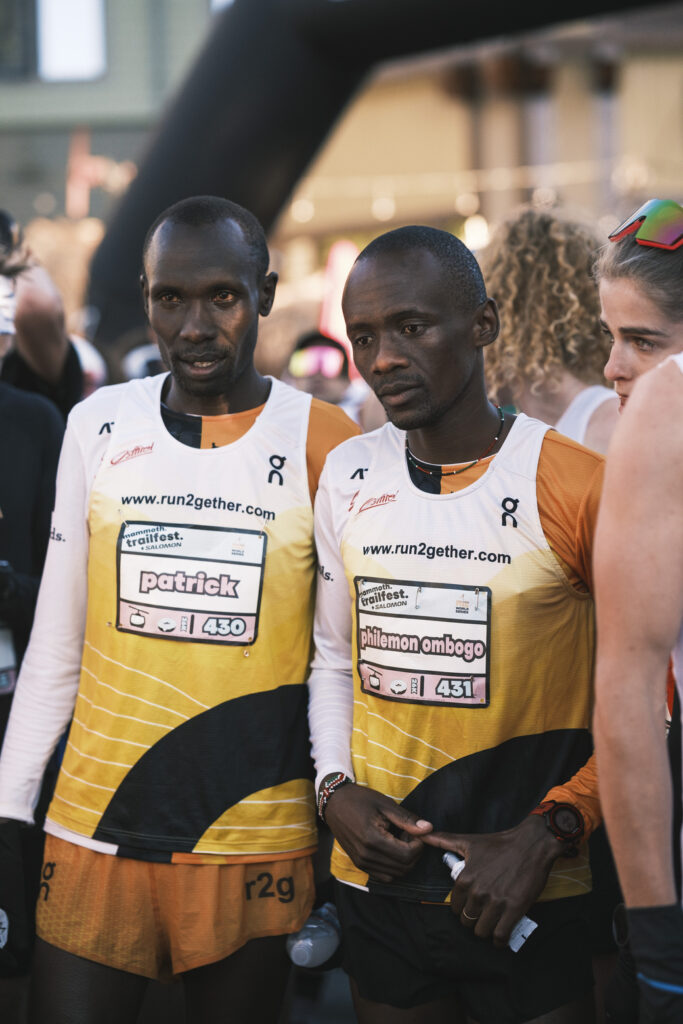How the Trail Shoe Industry is Joining the Fight for the Planet
Over the past few decades, there has been a massive growth in the number of trail runners around the world. In many ways, this growth has been a beautiful thing for the sport, and now individuals from different backgrounds, countries, and cultures are joining the community and learning to love time spent on the trail.
At the same time, this growth in the number of trail runners means a growth in the demand for trail running shoes. In 2022, the trail running shoe industry was worth $7.3 billion and is estimated to grow to $19 billion by the end of the decade, according to RunRepeat. As companies have worked to keep up with demand, they have turned to faster, lighter, and cheaper shoes, often at the cost of the environment.
These effects on the environment are a common problem throughout the fashion industry, which accounts for 8 to 10 percent of all global greenhouse gas emissions, making it the third largest polluting industry in the world. Out of those emissions, roughly 20 percent are due to footwear, according to a study in Nature Reviews.
In addition, the fashion industry is a major producer of plastic pollution, which has had widespread effects on our ecosystems over the past few decades. Since 2005, microplastics in the oceans have increased by 10-fold, with an estimated 171 trillion particles floating in our oceans. Roughly 35 percent of these particles are synthetic fibers, polyester, acrylic, or elastane, commonly found in footwear products, such as trail running shoes.
Recent scientific reports also indicate that the textile and fashion industry is responsible for an overwhelming amount of waste and water usage, from production to consumption. The fashion industry produces 92 million tonnes of waste and consumes 79 trillion liters of water, according to a recent report.
Although these impacts can seem daunting, there is a growing movement in the running industry to change the way we do business and build an industry that prioritizes the health of the planet and its people.

The Footprint of a Running Shoe
In the trail running industry, the manufacturing of our running shoes is the biggest contributor to impacts on the planet, including climate change, plastic pollution, and waste.
“If we look at the manufacturing phase, specifically for running shoes, it’s especially carbon-intensive because of the shoe’s complicated construction,” says Aileen Lerch, Senior Manager for Sustainability at Allbirds. “Many components are stitched, glued, and molded together in complicated forms. That complex construction has impacts on energy and material use.”
Allbirds, considered a leader in the sustainability movement in the industry, is working to remedy the manufacturing process, finding innovative new materials to create more sustainable footwear options that help grow the industry in the right way.
Their use of innovative technologies limits the impacts of manufacturing shoes, thereby lowering their carbon emissions and reliance on plastics. The company uses different materials, such as castor beans or recycled fibers, to manufacture its shoes and running gear. They’ve also started using a foam manufacturing process for the soles of their shoes, which immediately recycles excess materials from other parts of the process, something they call “instant circularity.”
They’ve used this to manufacture their Trail Runner series, which has a carbon footprint of 9.37 kg of CO2e, or as Lerch explained, about as much carbon emissions as a 4-ounce burger patty. For comparison, the average pair of running shoes generates 14kg of carbon emissions during its life cycle, from raw material to landfill, with manufacturing the largest emitter in the process (9.5 kilograms), according to an MIT study.
Another one of the emerging leaders in the industry, On Running, is a Swiss company that has garnered global recognition for its sustainability efforts. Like Allbirds, On Running is working to alter its manufacturing and find ways to produce sustainable footwear that reduces the use of fossil fuels.
In their recent sustainability report, the company highlights their aim to be fossil fuel-free by 2030, and so far, they’ve lived up to expectations. In 2022, 30% of the materials used in all their products were fossil fuel-free, mainly comprised of recycled materials.
These two companies are part of a larger movement finding ways to manufacture more sustainable shoes. Several other major brands, including Brooks Running, Saucony, and Hoka, have all started to follow the trend and retrofit their operations to be more environmentally conscious.
“I think adoption of better business practices will only gain momentum as the impacts of climate change reach more and more people,” says Lerch. “It will become a business imperative.”
Combatting Fast Fashion
Along with the growth of the trail running industry, there has been a substantial push for companies to produce cheaper equipment at a faster rate, often relying more heavily on fossil fuel-intensive processes. Many major shoe brands release different colorways or “improved” versions of their flagship products every year, priding themselves on cheaper shoes that help their customers feel lighter and faster on the trail.
These efforts to produce products faster and cheaper contribute to something called “fast fashion.” Fast fashion is the idea of mass-producing products at a low cost, often causing these products to be less durable and in need of replacement after a very limited amount of time. The process is one of the biggest downfalls of the fashion industry because it promotes overconsumption, cheap labor, and fossil fuel-intensive manufacturing.
For these reasons, there has been a growing movement for companies and consumers to practice “slow fashion,” which involves making products more durable, recyclable, or available for upcycling. In the past decade, this trend has started to catch fire in the trail-running industry.
“Recycling would be ideal, but because of their mixed materials and complicated construction, running shoes are almost impossible to recycle,” says Lerch. “After a few hundred miles, they end up in landfills, where, because of the synthetic materials, they don’t decompose.”
Currently, 90 percent of all footwear ends up in landfills, primarily because of these issues with synthetic materials. In addition, the average pair of running shoes only lasts between 180 to 620 miles before being replaced, according to RunRepeat. At an average of 15 miles per week, that means your running shoes would last less than a year before needing to be replaced.
Norda, a Canadian running shoe company, sees this short lifespan as a major issue and aims to lessen its impact by emphasizing “durability over disposability.” The company uses Dyneema bio-based fibers, which offer lower carbon footprints by using recycled emissions. “The best approach is at the beginning of the supply chain: making components that are stronger, lighter, more sustainable,” norda co-founder Willamina Leus-Martire recently told Trail Runner Magazine.
At On Running, they’ve created a subscription-based Cyclon program, allowing individuals to purchase and recycle their products. Last year, they introduced the first member of the line with the CloudNeo, a running shoe line designed to be recycled after six months. Subscribers can purchase the shoes and then return them after they are worn out, with the company replacing the shoes with another recycled pair.
Other companies have joined the movement toward slow fashion, working to extend the life of their shoes. Allbirds and HyloAthletics each offer trade-in programs that provide credits to individuals who recycle their shoes. Killian Jornet’s Nnormal recently partnered with the outsole manufacturing company Vibram to offer runners the opportunity to repair their shoes, increasing the longevity of each pair. Even major brands are getting on board, like Veja Shoes, who have started upcycling plastic bottles and polyester to manufacture the fabric in their shoes.

Minding Your Footprint
These programs and efforts to make shoes more sustainable are great solutions to the issues in the footwear industry, but none of it matters if no one buys the product or recycles the shoes.
“Our industry can create solutions, but none will work if we don’t bring the consumers along,” Caspar Copetti, co-founder of On Running, told Forbes. “And frankly, that is the hardest part.”
As consumers, choosing a sustainable pair of shoes can be difficult because many brands and companies use greenwashing to market themselves as “eco-friendly” or “environmentally conscious” without ever actually following through on their commitments to the planet. This false marketing can make it difficult for consumers to discern which products are truly sustainable and beneficial to the planet.
“I believe brands need to be held to higher standards when it comes to disclosing their impacts,” says Lerch. “And I think legislation is heading that way.”
Some brands have already started practicing transparency by disclosing their environmental impacts, and the more common this becomes, the more informed decisions runners can make regarding their running shoes. Until then, runners should question the sustainability of any new shoes before purchasing.
“Try to question every new purchase,” says The Green Runners in their core pillars. “Do you need it to run, or do you just want it?”
The Green Runners, a United Kingdom-based non-profit organization, started with a few environmentally conscious runners in a WhatsApp group and has grown to include hundreds of individuals from around the globe. The group is united by a commitment to sustainability and encourages members to think more about their gear and the ways they choose to practice the sport.
Asking ourselves these questions can increase our chances of creating more sustainability in the industry. If we start asking where our shoes come from and what impacts they have on the places we love, we can begin to demand more from the brands manufacturing the shoes. Without its runners, the running shoe industry is nothing, and the more we recognize this power, the more change we can create for our planet.
“At the end of the day, the best shoes you can buy are the ones you’ll love, wear, and maintain,” says Lerch. “So, be intentional with your purchases.”
